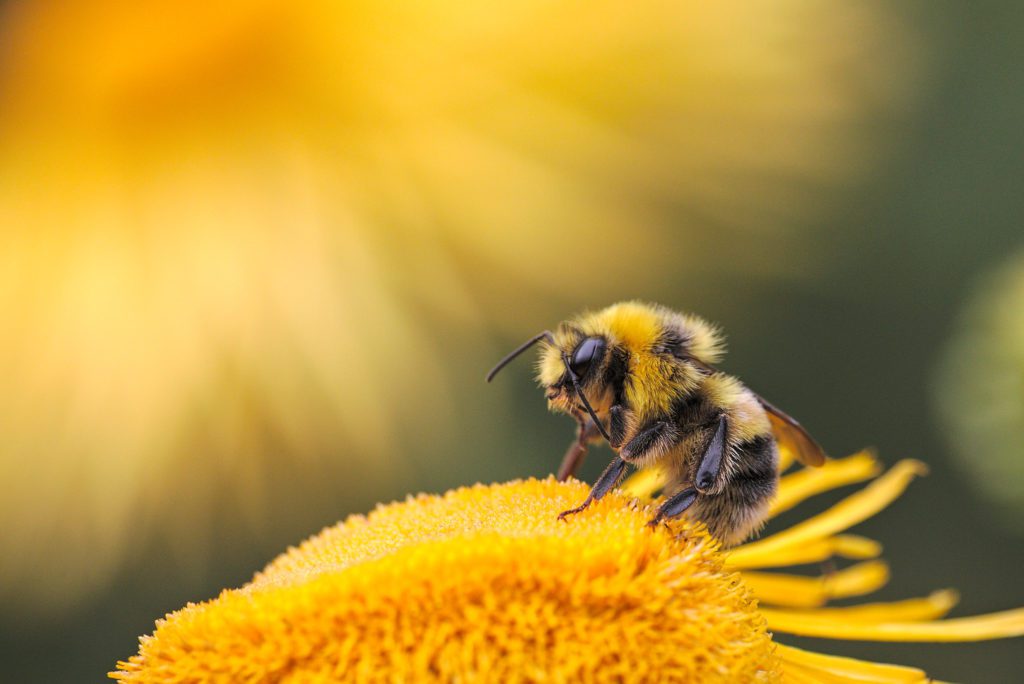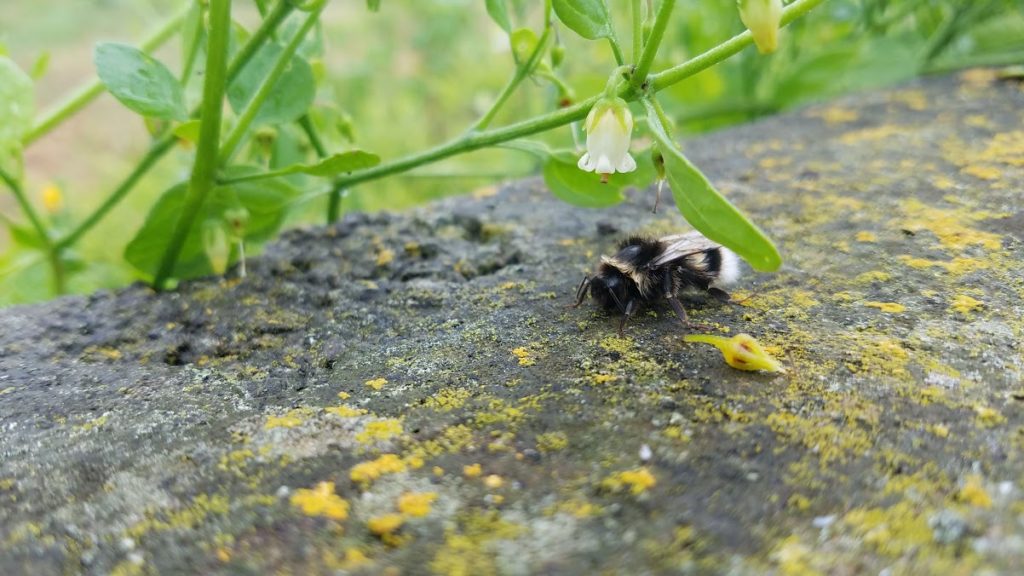Bumblebee
Bumblebees are great pollinators and smart as well. They can map out food sources, play, and maybe even experience emotions. Without a doubt, they are much cooler than honeybees who like to steal the show.
Main Notes and Takeaways
- Most bumblebee nests are built from the hard work of one queen who emerges in the spring and dies by fall after the next generation of queens leave the nest (read more below).
- Bumbles are excellent pollinators due to their large, hairy bodies and large brains capable of mapping out pollen sources.
- Like the inferior honeybee, bumbles have pollen baskets on their legs and make honey to feed their young.
- A 2022 study suggests bumblebees are actually capable of play, implying a level of intelligence unheard of in insects (read more below).

Our Favorite Notes from This Episode
Bumblebee lifecycle
In spring a queen bumblebee emerges from her deep winter slumber to find a good nesting spot. Once she’s found it, she begins laying already fertilized eggs and gathering food for her young as they hatch. By summer, depending on species, she has grown her nest to be a couple hundred bees strong. Everyone at this time helps find food which they bring back to the nest to make into honey to help feed the growing family. In late summer priorities shift to preparing for the next generation and new queens along with male drones are produced. In fall the males have finished their duty and they all die off while the new queens leave the nest and find a good place to hibernate through the winter. Come spring, the queens emerge to start the process over again.
The big brains of bumblebees
While we usually think of birds or mammals when we think of animals playing, there is research that suggests insects play too. The bumblebees in this study were given the option of interacting with little wooden balls or ignoring them to reach food. Again and again the bees chose to interact with the “toys”. The toys did not give them a reward of food or any other obvious reward and they truly seemed to be playing just for fun. It was also found that younger bees played more often than older bees which is very common in other animals who play.
It was also found that the bees would seek out the wooden ball toys. The bees were taught that one color of chamber would have toys but not another color. Afterwards, they would actively enter the colored chambers that they expected the toys to be in and spend more time there. This brings up a question: if bumblebees play, do they feel joy? Perhaps more importantly, if they feel joy do they feel sadness, fear, and other emotions that we consider human? It’s an interesting thought and raises many more questions regarding ethics in insect experiments, testing, and husbandry/care.

Sources/Further Reading:
- Bumblebee nests. Bumblebee Conservation Trust.
- Lamke, K., Hatfield, R. 2020. Five Ways To Support Queen Bumble Bees This Spring. Xerces Society for Invertebrate Conservation.
- Dona, H., Solvi, C., Kowalewska, A., et al. 2022. Do bumble bees play? Animal Behavior 194:239-251. https://doi.org/10.1016/j.anbehav.2022.08.013
- Buatois, A., Dubois, T., Lihoreau, M. 2020. Bumblebees develop more efficient traplines than honey bees. Research Center on Animal Cognition.
- Dornhaus, A., Chittka, L. 2001. Food alert in bumblebees (Bombus terrestris): possible mechanisms and evolutionary implications. Behavioral Ecology and Sociobiology 50:570-576. https://doi.org/10.1007/s002650100395
- Soroye, P., Newbold, T., Kerr, J. 2020. Climate change contributes to widespread declines among bumble bees across continents. Science 367(6478):685-688.
Did you spot an error or have questions about this post? Email Nicole Brown.
